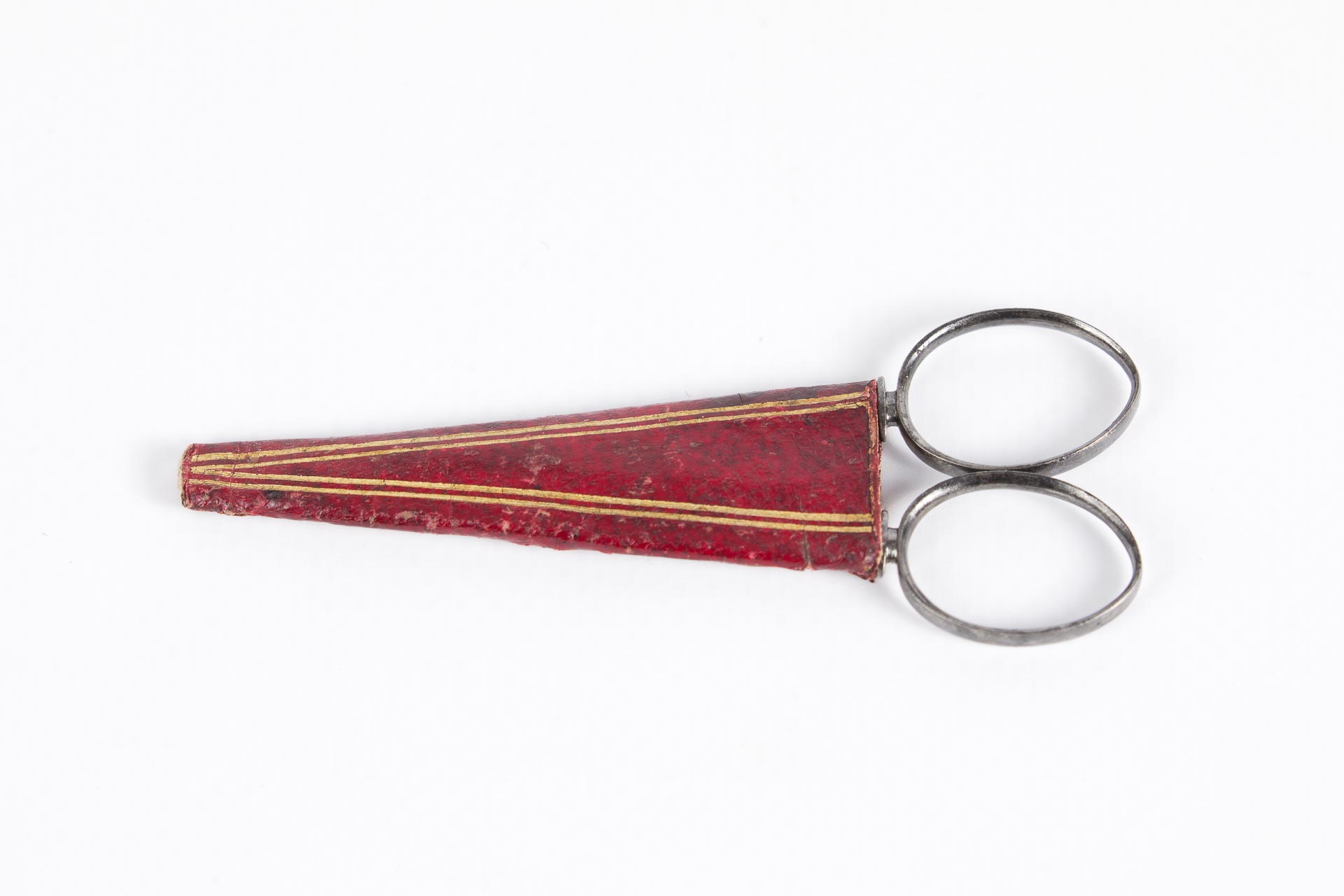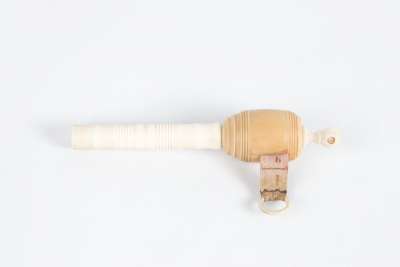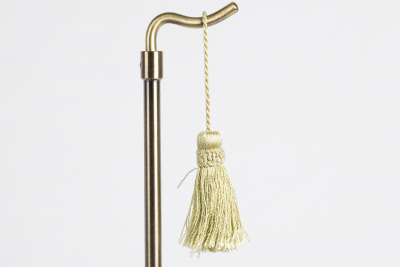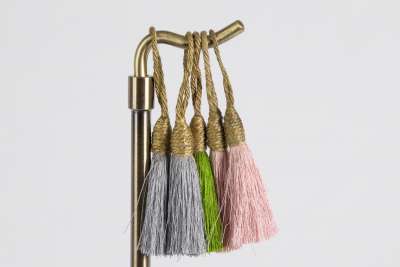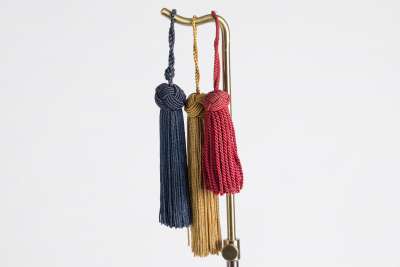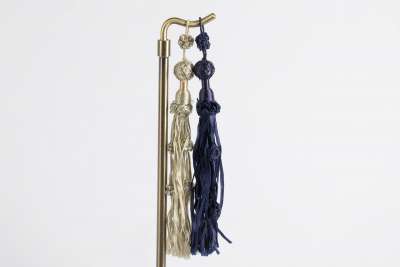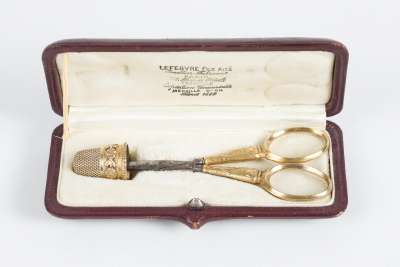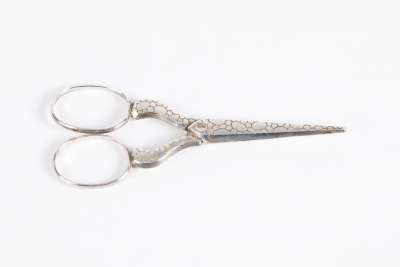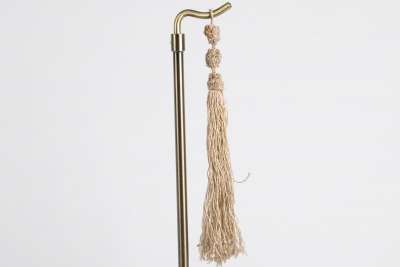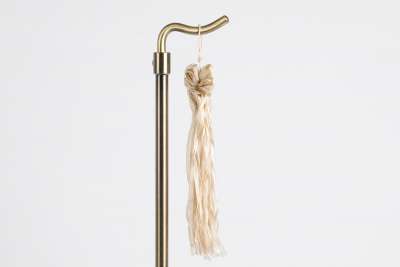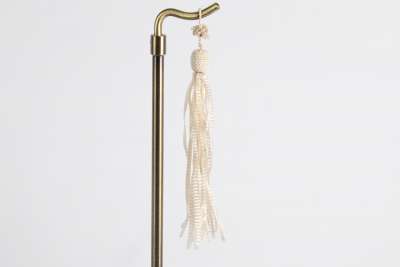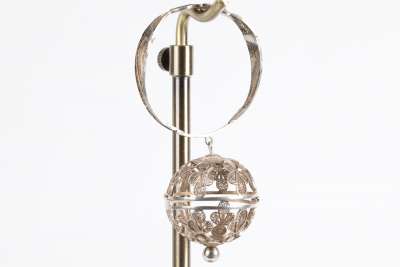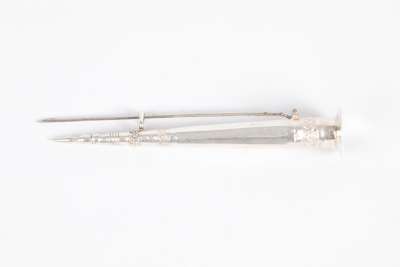This antique pair of embroidery scissors hails from the early 19th century, an era marked by meticulous handcrafting and exquisite metalwork. Originating from a skilled artisan, these scissors embody the wedge style typical of that period, offering a glimpse into the past of sewing and needlework. The cut steel blades are housed in a striking red sheath, a common choice for protecting sharp tools. The scissors exhibit a fine craftsmanship with tight blades and needle-sharp points, designed to snip threads with precision.
Condition Report
These early 19th-century embroidery scissors are in a condition that reflects their age and historical usage. The cut steel maintains its integrity, with the blades remaining tight and capable of cutting effectively to the tips. The scissors show wear consistent with their age, which is typical for items of this vintage. The accompanying red sheath, while showing signs of wear, continues to serve its purpose of protecting the blades. Overall, the scissors are in a good state, with signs of use that add to their historical charm and authenticity.
Dimensions
Weight: 6gm, Length: 8.5cm without sheath 8cm, Width: 3cm.
An Essential Tool for Embroidery Enthusiasts
Embroidery scissors like these were essential tools for needleworkers in the early 19th century. Designed specifically for snipping threads with precision, they were an indispensable part of any sewing kit. The compact size and sharp blades made them perfect for intricate embroidery work, where precision and control were paramount. The protective sheath ensured the blades remained sharp and safe when not in use, highlighting the practical design considerations of the era.
19th Century Wedge Style
The scissors are a fine representation of the wedge style popular in the early 19th century. This style is characterised by its functional design, focusing on precision and ease of use. The wedge shape allowed for better control and grip, making these scissors a favourite among embroiderers. This style reflects the period's emphasis on practicality and the growing popularity of embroidery as a pastime and profession. The cut steel blades are an example of the materials commonly used during this time, known for their durability and sharpness.
The Craft of Cut Steel
The creation of these scissors involved the intricate art of cut steel, a technique that required significant skill and attention to detail. Cut steel was prized for its strength and ability to hold a sharp edge, making it ideal for crafting tools like embroidery scissors. The blades were likely forged and then meticulously sharpened to ensure precision in cutting. The red sheath is a functional addition, crafted to protect the blades and maintain their sharpness. The craftsmanship involved in making this pair of scissors is a testament to the artisanal skills of the period.
Unknown Artisan of the Early 19th Century
While the specific maker of these embroidery scissors is unknown, they are undoubtedly the work of a skilled artisan of the early 19th century. During this time, toolmakers were highly regarded for their ability to produce functional and durable items. The precise construction and design of these scissors suggest they were crafted by someone with considerable expertise in metalwork. This anonymity adds an element of mystery and intrigue, common in many antique tools where the maker's identity has been lost to time.
Collected by Enthusiasts of Historical Tools
Collectors of historical tools and sewing implements often seek out items like these embroidery scissors for their uniqueness and craftsmanship. Such tools offer insight into the daily lives and practices of past generations, making them valuable to historians and enthusiasts alike. The wedge style and cut steel construction are particularly appealing to collectors due to their rarity and the skill required to produce them. These scissors not only serve as a functional tool but also as a piece of history, attracting those interested in the evolution of needlework and the tools that made it possible.
